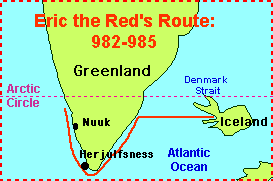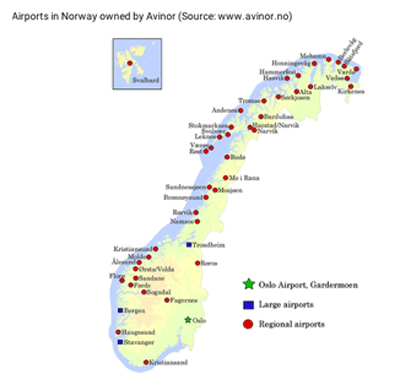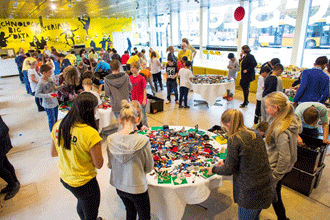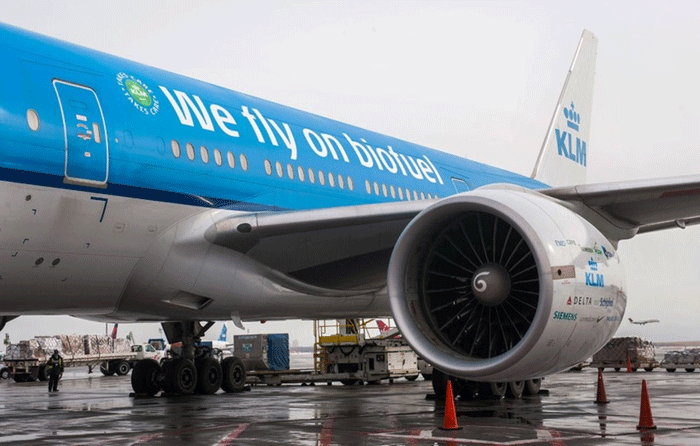Smart
Marketing Alternative Facts or Faked News?
 Erik
(the Red)—a true Viking—woke up one day and found himself
an outlaw from Iceland for three years due to a dispute, notwithstanding
the fact that he killed a few people along the way.
Erik
(the Red)—a true Viking—woke up one day and found himself
an outlaw from Iceland for three years due to a dispute, notwithstanding
the fact that he killed a few people along the way.
Being outlawed, Erik sailed west in year
982 to a somewhat mysterious and little-known land.
He rounded the southern tip of this mystery
island (later known as Cape Farewell, and Greenland) and sailed up its
western coast.
Erik eventually reached a part of the
island that, for the most part, seemed ice-free and consequently had
conditions—similar to those of Iceland—that promised growth
and future prosperity.
According to the Saga of Erik the Red,
he spent his three years of exile exploring this land.
Tales
Of Greenland
When Erik
returned to Iceland after his exile had expired, he is said to have
brought with him stories of a “Greenland.”
Erik deliberately gave the land the name
“Greenland” as a more appealing moniker than “Iceland”
in order to lure potential settlers.
Erik reasoned, “People would be
attracted to go there if it had a favorable name.”
Erik, as it turns out, understood that
the success of any settlement in Greenland would need the support of
as many people as possible.
His salesmanship proved successful, as
many people (especially Vikings) became convinced that Greenland offered
a great opportunity.
Going
Green Follows
All of
this said, there is no denying that the Nordic people can gaze back
proudly at a long, legendary history of “going green.”
Green technologies are in the fabric
of their history and quite natural to the Nordic people.
Thus, as the world continues to explore
the development of sustainable technologies, “Green Aviation”
seems like a natural thing to do.
Farfetched?
Maybe, and yet here is also an excellent
reputation for respecting for nature and preserving the environment.
MORE
Inconvenient Truth Emerging
As that
famous Al Gore film underscored, we humans are polluting our planet
and emitting too much Green House Gases (GHG) and CO2 into the atmosphere,
thereby contribution to global warming. The Nordic countries have taken
the issue very seriously.
They began aggressive development of
technical solutions such as Wind Mills, Geothermal systems, and much
more in order to tackle the issue of reversing the global warming trend
as well as reducing general pollution.
What
Role For Transportation?
The transport
challenge was taken to heart as well.
True, there are no Nordic Electric Cars (EVs)—except the Danish
Ellert that appeared in 1987, and only for a couple of years—nor
trains, buses or metros, but the Nordic countries did initiate converting
public transportation into sustainable systems as well as moving toward
EVs.

Gasless
Norway Ahead
For example, 37 percent of cars bought
in Norway during the month of February 2017 were all EVs.
No less astounding is the edict that
the countdown is on—with a goal of the year 2025, Norway plans
to prohibit gasoline and diesel cars from operating in the country entirely!
SJF
Airports
As you
read this, Avinor is one of the first airport companies in the Nordic
countries—together with Stockholm’s Arlanda airport in Sweden—to
already offer a blend-in of Sustainable Jet Fuels (SJFs) to their customers
at Oslo Gardemoen Airport.
Needless
To Say, Say It Anyway
In the
meantime, the EU has imposed strict limits on CO2 emissions (a 40 percent
emission reduction by 2030 compared to 1990).
Into all of this, the aviation industry
has had to gear up to this challenge.
Needless to say that the COP21 Global
Agreement reached in Paris last year pushed this subject further.
Recent mission reduction initiatives
taken by ICAO, IATA, ATAG and many other institutions have also assisted
in moving the global aviation industry away from fossil fuels (Jet A1
kero) and toward a gradual transition into sustainable and renewable
energy by converting plant biomass, waste, and other renewable feedstocks
to produce Sustainable Jet Fuels.
Greener
Nordics
So just
like many other countries in the EU and around the globe, numerous green
initiatives were initiated in the Nordic countries to create societies
that would help reduce GHG/CO2 emissions, lower pollution, and create
a cleaner as well as a healthier environment.
Aviation in the Nordic countries needed
to be part of that global movement.
 Getting
On Board
Getting
On Board
The first
of a series of Green Aviation Days at Copenhagen Airport was organized
in 2012. The events took place in the old, historic passenger terminal,
which was built in 1939 and designed by one of our great architects,
Wilhelm Lauritzen.
Since then, numerous similar sustainable
aviation events have been held in all the Nordic countries with the
aim of advancing a sustainable aviation industry and making the public
aware of the sustainability efforts undertaken by the aviation industry.
 Stakeholders
& Kid Stuff
Stakeholders
& Kid Stuff
The different stakeholders
in this category of aviation, including “future” passengers—young
school kids—have attended these events.
In 2015 we arranged with LEGO to provide
1 million Lego bricks and invited young school children from the surrounding
schools to build “green airplanes and airports,” all part
of a sustainable society. The children were interviewed about their
Lego models and explained very well and seriously their objective to
lower pollution and GHG emissions.
Techno
SJFs
As described
in my previous article, we have several technologies available for the
production of SJFs—alternative jet fuels—and many more shall
be available during the coming decades.
However, certain key criteria are vital
for a sustainable aviation industry. Here is a quick summary of these
key issues for the aviation industry:
- The SJFs must meet very strict safety standards
with approval of the American Society for Testing and Materials
(ASTM), especially in reference to in-flight criteria, such as freezing
limits, viscosity, and many other criteria specific for aviation.
- SJFs must meet “blend-in” standards,
so it can safely be mixed with traditionally fossil-based Jet A1
kerosene, as for the time being SJFs are only certified for up to
a 50 percent blend-in mixture (100 percent use of SJFs shall most
likely follow within the next 5 to 10 years). This is important,
as it shall take the industry 10 to 15 years to convert to the full
use of SJFs, mainly due to the time it will take to build up the
production capacities of SJFs around the world. As aviation is a
global industry, it’s important that SJFs are available—over
time—at all the current 3,846+ airports that handle the major
part of the global commercial aviation industry.
- SJF must be available at competitive prices compared
with fossil Jet A1 kerosene prices. Presently, SJFs are offered
at prices 3 to 4 times higher than the Jet A1 prices and as such
are not attractive for the future aviation industry. However, as
with most other new innovations, prices are expected to come much
down as new technologies become available.
- Also vital, the SJF must provide major reduction
in CO2/GHG emissions and other pollutions. Although this challenge
is still in its development, it’s progressing very well. Most
tests that have been undertaken with SJFs produced by various types
of biomass and feedstocks from organic material as well as waste,
forestry residues, wood biomass, straw, and marine feedstocks have
all proven to reduce the GHG and CO2 emissions at different scales.

Despite global society’s
best hopes and dreams for a green world, only a small (albeit growing)
number of daily flights in commercial aviation utilize biofuels.
Just click this global biofuel flight
map and see for yourself.
United Airlines, SAS, KLM, Lufthansa and
some others have marshaled scheduled biofueled flights, which measured
against global airline operations are a modest first step in the
right direction. |
Certification
Mandatory
ATAG and
IATA estimate that over time and with 100 percent use of SJFs, an 80
to 90 percent reduction in GHG emission will be achievable.
However, it will be mandatory to certify
the SJFs in order to qualify for a true and realistic GHG/CO2 emission
reduction as the full footprint of the SJF process from field-to-airplane
must be certified in order to prove the reduction.
This process will be a major challenge
(although quite feasible) as in the early stage of SJFs global introduction
it will require hard work by SJF producers and the aviation stakeholders.
What is needed immediately is close cooperation
with the verification authorities or certification institutes such as
RSB (RoundTable for Sustainable Biomaterials) and other similar organizations.
But this certification is vital, as it
does not make sense to go through the entire transition from fossil
Jet A-1 kerosene onto SJFs if that expensive and laborious move does
not solve the key issue—that of reducing GHG emissions in the
aviation industry.
 |
An
Even Better World
Looking ahead,
we can only hope that the day will dawn wherein as a result on innovation
and determination, aviation contributes to reducing—and hopefully
even reversing—global warming as well as extreme weather conditions.
It’s good to never forget that
an extra benefit is the estimation that over time SJFs will be able
to reduce the cost of energy for the aviation industry as well as provide
a more stable and dependable supply compared to fossil kerosene, which
is often subject to political conflicts and other unpredictable interferences
in the supply chain.
Even
More Reading
For further details and in-depth facts on the technical aspects of SJFs
and the complete information on this matter, check out the Nordic
Report (Sustainable jet fuels for aviation) as well as the cooperation
on SJFs in the Nordic countries through the Nordic Council and the Nordic
Energy Ministers.
In the next installment of this exclusive FlyingTypers series on sustainable aviation, FlyingTypers together with various stakeholders in the Nordic countries will cover
some of the specific initiatives taken to advance SJFs in this part
of the world, including the cooperation on SJFs through the Nordic Council
and the Nordic Energy Ministers.
We will also examine developments amongst
facilitators, producers, airports, and airlines as well as various organizations
that altogether make it possible for this region to lead the way in
aviation future challenges for a sustainable environment.
Your comments are welcome.
Robert Arendal
To read Part 1 of this series–Long
Road To Tomorrow, Click here.
 Air cargo pioneer,
dreamer, and doer Robert Arendal has over 45 years of experience
in the air cargo industry, occupying various shipping and air
cargo management positions in Europe as well as the U.S. In 1970
he became part of the management team that founded Cargolux Airlines
International SA, spending 29 years as Senior Vice President Sales,
Marketing and Cargo Services as well as Deputy CEO. Air cargo pioneer,
dreamer, and doer Robert Arendal has over 45 years of experience
in the air cargo industry, occupying various shipping and air
cargo management positions in Europe as well as the U.S. In 1970
he became part of the management team that founded Cargolux Airlines
International SA, spending 29 years as Senior Vice President Sales,
Marketing and Cargo Services as well as Deputy CEO.
Mr. Arendal is a founding father
and first Chairman of TIACA (The International Air Cargo Association).
He is a past President and presently a member of TIACA's President
Council and entered the legendary TIACA Hall of Fame in 1997.
He is co-founder of the Cool Chain
Association and has been its chairman for 10 years.
More recently, Mr. Arendal became
a founding member of the ‘Sustainable Biofuel Network,’
a group of stakeholders facilitating aviation’s transition
from fossil fuels to sustainable and renewable alternative biofuels. |




 Vol.
16 No. 67
Vol.
16 No. 67 Vol.
16 No. 68
Vol.
16 No. 68